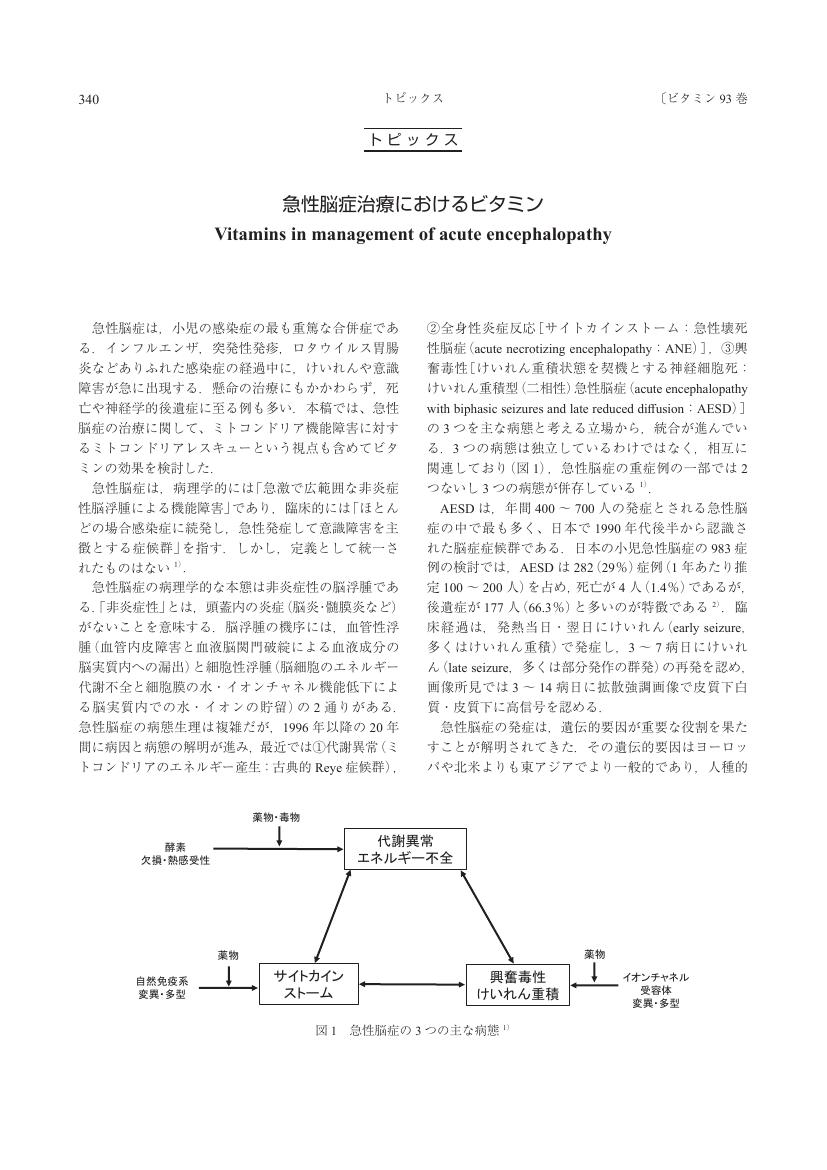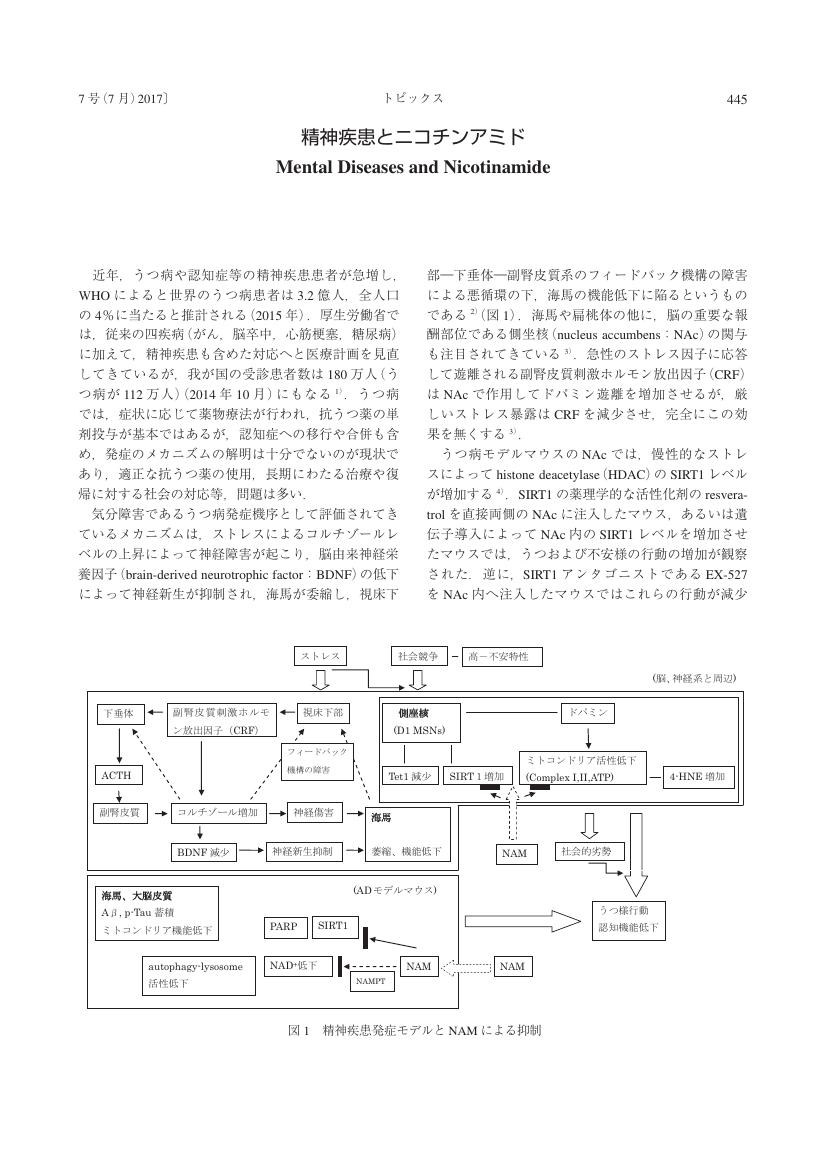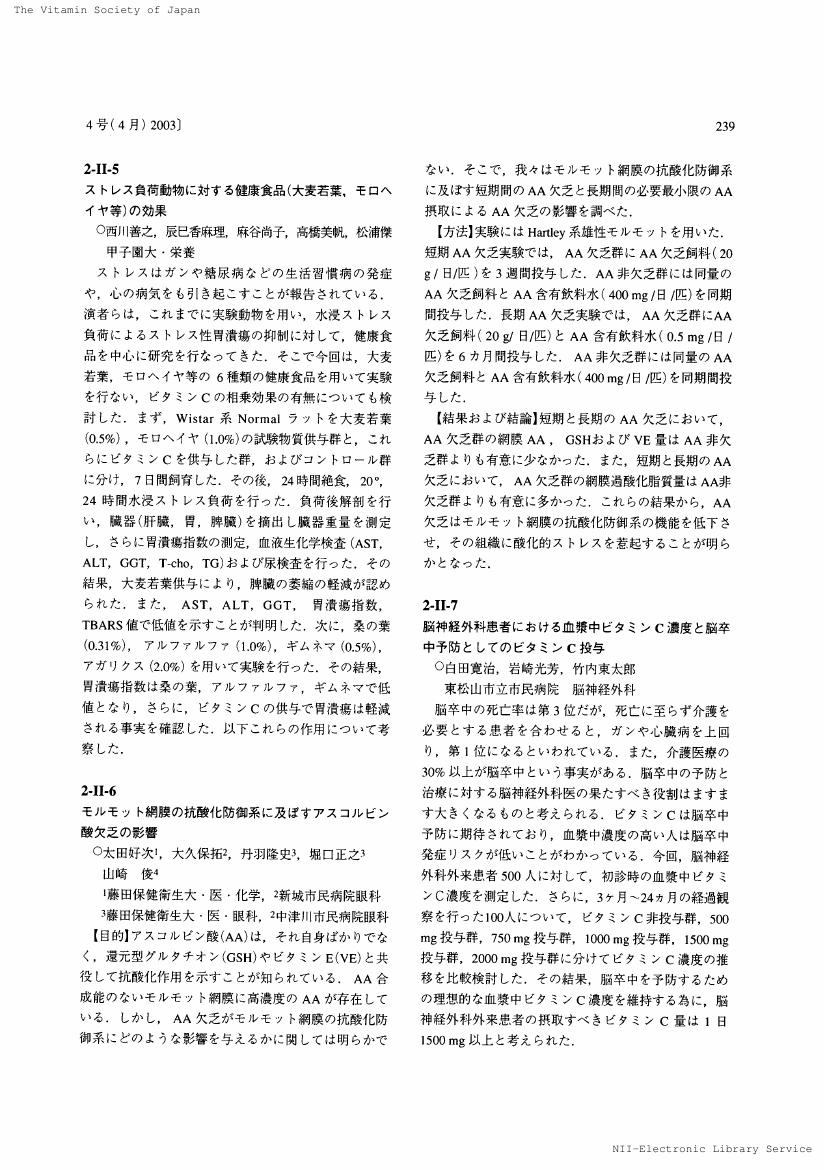3 0 0 0 OA 胆汁酸代謝とビタミンD受容体
- 著者
- 槇島 誠
- 出版者
- 公益社団法人 日本ビタミン学会
- 雑誌
- ビタミン (ISSN:0006386X)
- 巻号頁・発行日
- vol.85, no.2, pp.47-56, 2011-02-25 (Released:2017-10-10)
- 参考文献数
- 51
Nuclear receptors belonging to the NR1H and NR1I subfamilies, including vitamin D receptor (VDR, NR1I1), control cholesterol and bile acid metabolism. Bile acids are detergents essential for the digestion and intestinal absorption of hydrophobic nutrients, such as triacylglycerol, cholesterol and lipid-soluble vitamins, including vitamin D.Primary bile acids are generated from cholesterol and are secreted in bile as glycine and taurine conjugates. The intestinal microflora convert the primary bile acids to the secondary bile acids, including lithocholic acid (LCA). VDR, a receptor for 1,25-dihydroxyvitamin D_3(1,25(OH)_2D_3), acts as a bile acid receptor with specificity for the secondary bile acid LCA and its derivatives. VDR activation by 1,25(OH)_2D_3 or LCA induces the xenobiotic metabolism of bile acids. Synthetic LCA derivatives induce tissue VDR activation without inducing hypercalcemia in mice. VDR acts as a bile acid sensor as well as an endocrine receptor for vitamin D signaling.
- 著者
- 奥村 彰久
- 出版者
- 公益社団法人 日本ビタミン学会
- 雑誌
- ビタミン (ISSN:0006386X)
- 巻号頁・発行日
- vol.93, no.7, pp.283-290, 2019-07-25 (Released:2020-07-31)
The Committee on Pediatric Nutrition of the Child Health Consortium of Japan investigated vitamin B1 deficiency caused by excessive consumption of ionic beverages. In the national survey, we obtained clinical data from 33 children. Twenty-one children had a problem with the nurturing home environment. The median duration of excessive ionic beverage intake was 3.5 months and the daily intake was 1,000 mL or more in 25 children. Infectious diseases were the most common reason for excessive ionic beverage consumption. The symptoms of vitamin B1 deficiency were nonspecific, and about half of the cases had neurological sequelae. The questionnaire survey of parents on their awareness of ionic beverages and their actual usage of ionic beverages for their young children showed to be generally good. Having a positive opinion about the benefits of ionic beverages was associated with the risk of their excessive consumption. The questionnaire survey of pediatric practitioners showed that pediatricians’ attitudes toward children’s consumption of ionic beverages were generally appropriate. Pediatric specialists showed more appropriate attitudes toward children’s consumption of ionic beverages than non-pediatric specialists. It will be important to notify the potential harm of excessive ionic beverage consumption to prevent the occurrence of new cases.
2 0 0 0 OA チアミンとプリオンタンパク質
- 著者
- 山元 誉子 廣村 信 田鶴谷(村山) 恵子
- 出版者
- 公益社団法人 日本ビタミン学会
- 雑誌
- ビタミン (ISSN:0006386X)
- 巻号頁・発行日
- vol.88, no.12, pp.616-618, 2014-12-25 (Released:2017-08-10)
2 0 0 0 OA 神経管閉鎖障害:葉酸摂取による予防
- 著者
- 近藤 厚生 師田 信人 岡井 いくよ 山本 憲朗 近藤 厚哉 渡邉 智之
- 出版者
- 公益社団法人 日本ビタミン学会
- 雑誌
- ビタミン (ISSN:0006386X)
- 巻号頁・発行日
- vol.92, no.1, pp.1-17, 2018 (Released:2019-01-31)
The Medical Research Council vitamin study has unequivocally demonstrated in 1991 that 72 percent of recurrence of neural tube defects (meningomyelocele and anencephaly) were successfully prevented by taking 4 mg of folic acid periconceptionally. Of 87 countries whose major staples were forti¿ed with folic acid, micronutrients, or minerals, 81 have implemented food forti¿cation with folic acid and observed a significant decline of neural tube defect prevalence following the fortification program. The Ministry of Health and Welfare in Japan recommended in 2000 that women planning to conceive should take folic acid supplements of 400 μg daily. During the past 16 years, however, prevalence of meningomyelocele has not decreased but remains rather stable, from 5 to 6 per 10,000 births (live births and stillbirths). A total of 542 newborns, i.e., 502 with meningomyelocele and 40 with anencephaly, were estimated to be born in the year of 2015. Furthermore, if fetuses terminated during pregnancy were counted, the real number of them would probably climb up to 2169 and would be 4 times as many as the number of¿cially reported. Since longstanding recommendations alone have not worked properly, we would like to urge the government to implement mandatory food forti¿cation with folic acid, which will certainly decrease the number of afÀicted patients and lead to economic bene¿ts and signi¿cant reduction in the cost burden on the healthcare system and healthcare payers.
2 0 0 0 OA 急性脳症治療におけるビタミン
- 著者
- 柏木 充 瀧谷 公隆
- 出版者
- 公益社団法人 日本ビタミン学会
- 雑誌
- ビタミン (ISSN:0006386X)
- 巻号頁・発行日
- vol.93, no.8, pp.340-345, 2019-08-25 (Released:2020-08-31)
2 0 0 0 OA サプリメントの利用において留意すべき事項(平成28年度日本ビタミン学会市民公開講座要旨)
- 著者
- 梅垣 敬三
- 出版者
- 公益社団法人 日本ビタミン学会
- 雑誌
- ビタミン (ISSN:0006386X)
- 巻号頁・発行日
- vol.91, no.1, pp.66-67, 2017 (Released:2018-04-12)
2 0 0 0 OA 精神疾患とニコチンアミド
- 著者
- 新 真理子
- 出版者
- 公益社団法人 日本ビタミン学会
- 雑誌
- ビタミン (ISSN:0006386X)
- 巻号頁・発行日
- vol.91, no.7, pp.445-449, 2017 (Released:2018-07-31)
2 0 0 0 OA コラーゲンペプチドの骨格筋における有用性
- 著者
- 北風 智也 原田 直樹 山地 亮一
- 出版者
- 公益社団法人 日本ビタミン学会
- 雑誌
- ビタミン (ISSN:0006386X)
- 巻号頁・発行日
- vol.91, no.7, pp.433-436, 2017 (Released:2018-07-31)
- 著者
- 大和田 凌平 小関 祐 齋藤 靖和
- 出版者
- 公益社団法人 日本ビタミン学会
- 雑誌
- ビタミン (ISSN:0006386X)
- 巻号頁・発行日
- vol.92, no.5.6, pp.267-269, 2018-06-25 (Released:2019-06-30)
2 0 0 0 OA ビタミンCは尿路結石のリスク因子か?
- 著者
- 山本 憲朗 石神 昭人
- 出版者
- 公益社団法人 日本ビタミン学会
- 雑誌
- ビタミン (ISSN:0006386X)
- 巻号頁・発行日
- vol.87, no.10, pp.575-578, 2013-10-25 (Released:2017-08-10)
2 0 0 0 OA 腸管バリア機能における亜鉛の重要性
- 著者
- 東村 泰希 内藤 裕二
- 出版者
- 公益社団法人 日本ビタミン学会
- 雑誌
- ビタミン (ISSN:0006386X)
- 巻号頁・発行日
- vol.91, no.7, pp.437-440, 2017 (Released:2018-07-31)
2 0 0 0 OA 食事中の脂質は脂溶性ビタミンの吸収を増加させる
- 著者
- 池田 彩子 鈴木 規恵
- 出版者
- 公益社団法人 日本ビタミン学会
- 雑誌
- ビタミン (ISSN:0006386X)
- 巻号頁・発行日
- vol.91, no.10, pp.613-616, 2017 (Released:2018-10-31)
- 著者
- 糸川 嘉則
- 出版者
- 公益社団法人 日本ビタミン学会
- 雑誌
- ビタミン (ISSN:0006386X)
- 巻号頁・発行日
- vol.56, no.11, pp.587-592, 1982-11-25 (Released:2018-03-10)
2 0 0 0 OA 活性型ビタミンDは、トリプトファン水酸化酵素およびレプチン遺伝子発現を制御する
- 著者
- 金子 一郎 Marya S. Sabir Christopher M. Dussik G. Kerr Whitfield Amitis Karrys Jui-Cheng Hsieh Mark R. Haussler Mark B. Meyer J. Wesley Pike Peter W. Jurutka
- 出版者
- 公益社団法人 日本ビタミン学会
- 雑誌
- ビタミン (ISSN:0006386X)
- 巻号頁・発行日
- vol.91, no.2, pp.132-134, 2018 (Released:2018-04-12)
2 0 0 0 OA 胆汁酸代謝と大腸がん
- 著者
- 東村 泰希 内藤 裕二
- 出版者
- 公益社団法人 日本ビタミン学会
- 雑誌
- ビタミン (ISSN:0006386X)
- 巻号頁・発行日
- vol.91, no.1, pp.53-56, 2017 (Released:2018-04-12)
2 0 0 0 OA 閉経期女性の骨代謝における食事と運動の役割
- 著者
- 石見 佳子
- 出版者
- 公益社団法人 日本ビタミン学会
- 雑誌
- ビタミン (ISSN:0006386X)
- 巻号頁・発行日
- vol.90, no.9, pp.415-425, 2016 (Released:2017-12-26)
- 著者
- 石神 昭人
- 出版者
- 公益社団法人 日本ビタミン学会
- 雑誌
- ビタミン (ISSN:0006386X)
- 巻号頁・発行日
- vol.85, no.8, pp.400-404, 2011-08-25 (Released:2017-10-10)
- 参考文献数
- 9
- 著者
- 西川 善之 辰巳 香麻理 麻谷 尚子 高橋 美帆 松浦 傑
- 出版者
- 公益社団法人 日本ビタミン学会
- 雑誌
- ビタミン (ISSN:0006386X)
- 巻号頁・発行日
- vol.77, no.4, pp.239, 2003-04-25 (Released:2017-12-26)
- 著者
- 近藤 厚生 岡井 いくよ 早川 ちさ 下須賀 洋一
- 出版者
- 公益社団法人 日本ビタミン学会
- 雑誌
- ビタミン (ISSN:0006386X)
- 巻号頁・発行日
- vol.83, no.5-6, pp.250-255, 2009-06-25 (Released:2017-10-10)
- 参考文献数
- 16
We have been assessing awareness of a role of folic acid, intake of folate supplements and dietary folate consumption among pregnant women during the past 6 years. A total of 6902 pregnant women responded to our questionnaires distributed from 2002 to 2007. Dietary folate was measured by analyzing food records completed by 441 pregnant women from 2003 to 2007. Rates of awareness and rates of folate supplementation were considerably low, 15% and 9%, respectively, in 2002, but increased year after year to 39% and 43%, respectively, in 2007. Of the 441 pregnant women who reported their food records 150 (34%) simultaneously took folate supplements. Although the amount of dietary folate consumed averaged 336μg/day in all the women, 126 women in the 1^<st> trimester consumed only 283μg/day, 120μg less than what was recommended by the Government. It was further observed that 61% of the women in the 1^<st> trimester neither consumed 400μg of dietary folate nor took folate supplements suggesting that the majority of the women were facing a real risk of conceiving fetuses afflicted with neural tube defects. Following strategies seem necessary to suppress incidence of neural tube defects in Japan: First, importance of folate supplementation should be stressed in a booklet for pregnant women. Second, the Government should repeatedly send folate information in relation to developing fetuses to the general public. Third, folate information should be given to young girls at curriculums of the junior and senior high school. Fourth, folate supplements should be given free for those women who wish to conceive. Finally, implementation of food fortification with folic acid should be seriously considered by the Government.
- 著者
- 桒原 晶子
- 出版者
- 公益社団法人 日本ビタミン学会
- 雑誌
- ビタミン (ISSN:0006386X)
- 巻号頁・発行日
- vol.90, no.7, pp.325, 2016 (Released:2017-12-26)
1. 初めに














